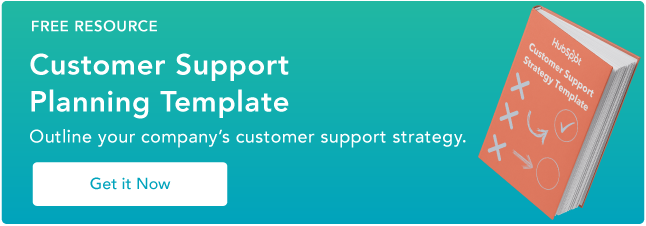What Is Loom?
Put simply, Loom is a video messaging tool. Using Loom, you can record your screen, yourself, or both, while also recording external audio, allowing you to talk over your video, before quickly and easily sending your finished video in an email or text.
All you have to do is open the app, hit record, and then you're off and running.

Once you're done recording, your video will automatically get uploaded to your Loom cloud, where you will get a link to the video to share with those you want to view it.

When implemented effectively, Loom can be an incredible customer service and client support tool to supplement your communication.
So, here are some ways unique ways you can use Loom to communicate with your customers more effectively.
How to Use Loom for Customer Support
- Visual explanations for customers.
- More effectively answer customer questions.
- Enhance the customer experience on your website.
1. Visual explanations for customers.
Most people are visual learners.
And it's hard to visually explain anything to someone if we can't be in the same room as them, which is often the case with customers and clients.
Video calls are great, but let's be honest, screen sharing is laggy and inefficient (and you will still have to deal with the scheduling issues).
But with Loom, you have the ability to visually explain just about anything and share it with a customer or client immediately.
This will give your customers instant gratification and eliminate any potential waiting.
And if they're busy when you send the video, it's not a problem. It'll be sitting there, waiting to be watched whenever they're ready.
Now, you may be thinking Loom is only useful for explanations for businesses whose product is an online tool or service, like software and web design services.
While Loom is great for that, there are tons of other industries and businesses that can benefit from using Loom to support their customers, regardless of whether or not they are an "online company."
To prove my point, here are some potential examples of things you can explain using Loom:
- A lawyer can walk a client through a legal document or contract
- A financial consultant can explain their budget projections for a client's business
- A marketing manager can explain their marketing campaign for their client's new product launch
2. More effectively answer customer questions.
Just like explanations, questions and problems are often expressed easier when they have a visual component.
Meaning that with Loom, your customers will be able to easily and visually walk you through any issues they may run into while using your product or service, such as demonstrating a technical error or asking why you made certain decisions.
This will enable you to help your customers more efficiently by offering better and more specific solutions and answers, leading to a better customer experience.
So if your customers are having trouble explaining a complication they're facing through email or over the phone, see if they can try recording a Loom.
Because doing so will help you help them.
3. Enhance the customer experience on your website.
Your website is likely the first place people will interact with your business, and if its user experience (UX or UE) isn't seamless, you could be costing yourself a potential customer.
With Loom, you can enhance a customer's experience on your website by recording FAQs and case studies.
FAQs
Frequently Asked Questions, or FAQs, are an excellent way to enhance the user experience on any website.
It saves your potential customers the time of having to reach out with questions that don't require complicated answers.
Typically, FAQs look something like this:

Clearly, these are some very helpful FAQs, but what do you notice about them?
It's a lot of text. Which is fine, but what could make it better?
Loom.
Using Loom, you can record answers to FAQs and embed them on your website.
This will enhance the user experience of your website even more because videos:
- Are more engaging than text
- Require less effort to consume by the reader
- Allow you to answer more complicated questions, meaning you can have more FAQs on your website
- Are more effective at answering questions (especially technical issues)
For example, say Google wants to add an FAQ on how to change the font size on Chrome.
Through text, it may look like this:
"To change the font size on Chrome, go to settings -> appearance -> font size, then choose your desired setting."
Now, this will work, but it will take some digging on behalf of the user to find the exact setting. But if there were a video, the user would know exactly what to do to change the font size on Google Chrome, saving them time and effort.
Case Studies
Case studies have many uses, and one of them can be to demonstrate to a client or customer how your product or service will benefit them.
By using a Loom, you'll be able to show and explain how you've helped previous clients visually.
If you're an SEO agency or web development company, you can show what changes you have made to client's websites and statistics that prove your service helped.
Or if you're an investment consultant, you can demonstrate how you analyze the market to find worthwhile investments.
I can go on, but the point is that using Loom is a great way to create a case study that will display your potential value.
For example, check out the website for the lead generation agency Pearl Lemon Leads.
On the Pearl Lemon Leads website, CEO Deepak Shukla has several case studies recorded with Loom to demonstrate how he has helped past clients.

When adding a Loom case study or FAQ to your site, be sure to download the video and embed it directly into your site, not just a link to it. That way, it will permanently stay on your website.
It'll also look more aesthetically pleasing to see a thumbnail of the video on your website instead of a URL.
Overall, Loom is a great tool for customer support. It's a free screen recording tool that allows you to share videos with customers through link sharing or embedding videos on your site. With this software, customers can comment on your video, allowing for real time communication, and they don't even need an account to do so.
But whatever tool you use, just be sure that video messaging is a part of your customer support and client communication.
.png?width=112&height=112&name=Image%20Hackathon%20%E2%80%93%20Vertical%20(9).png)











